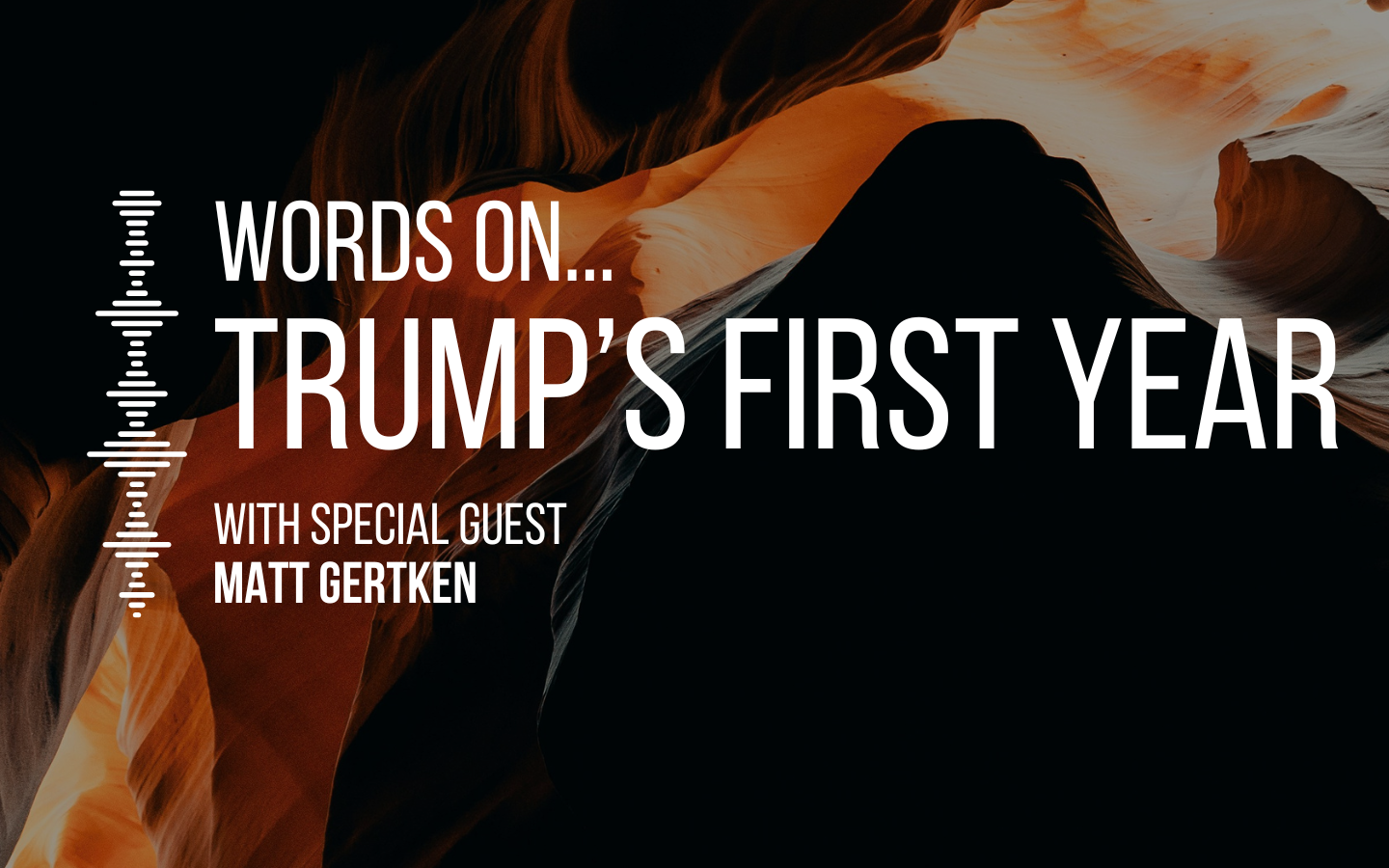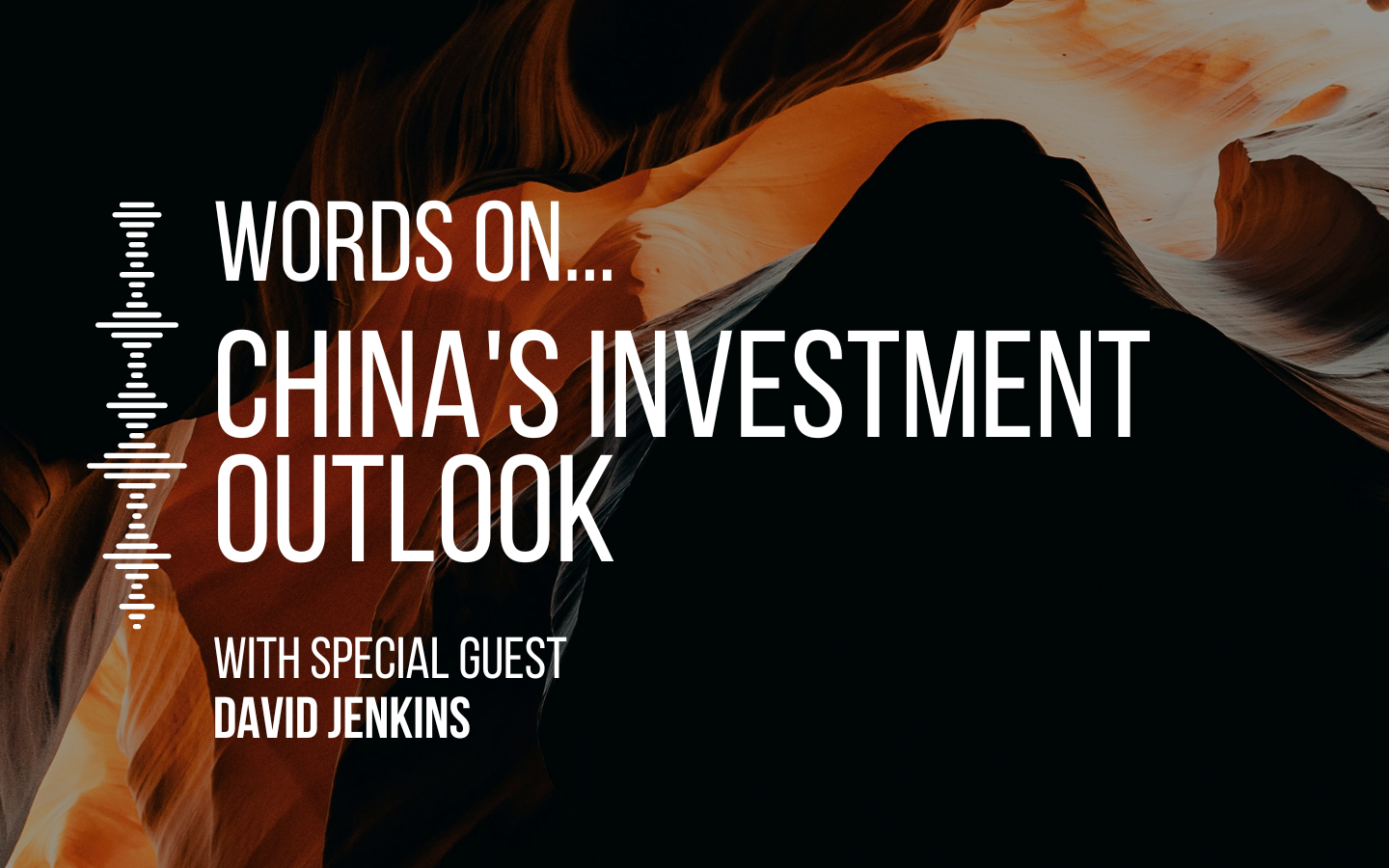


In this episode of Words on Wealth, CIO Tim Rocks speaks with Andrew Moir, Senior Investment Adviser and Chair of the Product Review Group (PRG), about how the PRG sources, tests and monitors managers, maintains our Approved Product List and High Conviction List, and supports access to private-market opportunities. They discuss the rise of private equity secondaries, the importance of liquidity and risk-adjusted returns, and highlights from the PRG Year in Review. Tune in to learn more.
This episode is also available on Apple Podcast.
Disclaimer
This podcast was prepared by Evans and Partners Pty Limited AFSL 318075.
Any advice is general advice only and was prepared without taking into account your objectives, financial situation or needs. Before acting on any advice, you should consider whether the advice is appropriate to you. Seeking professional personal advice is always highly recommended. Where this presentation refers to a particular financial product, you should obtain a copy of the relevant PDS, TMD or offer document before making any investment decisions. Past performance is not a reliable indicator of future performance.
Directors, employees and officers of Evans and Partners and its related bodies corporate may have holdings in the securities discussed. Any taxation information is general and should only be used as a guide.
This communication is not intended to be a research report (as defined in ASIC Regulatory Guides 79 and 264). Any express or implicit opinion or recommendation about a named or readily identifiable investment product is merely a restatement, summary or extract of another research report that has already been broadly distributed.
Tim Rocks (00:37)
Hello and welcome to Words on Wealth. I’m Tim Rocks, Chief Investment Officer. And with me today, I have Andy Moir, who wears many hats, he’s Managing Director, but for these purposes, he’s head of our product review group. So welcome, Andy. And perhaps could you start by just telling us a little bit about what the PRG is and its role in the firm.
Andrew Moir (00:58)
Yeah, thanks, Tim. Yeah, the product review group, I suppose, has got the overarching responsibility of sourcing, assessing and monitoring our product suite and product suitability for the client base. And when I’m talking to the client base, I’m talking across all facets of the client base for all advisors. And I suppose we recognize that finding the best in class investment solutions across all asset classes, which gives your advisor the ability to really build portfolio and provide a vast array of choices. And we target managers in a number of different ways, but it’s something that we monitor the existing managers we look at. We’re always looking for new opportunities to add to the list, but equally we’re not about proliferating a list and just adding a manager for the sake of it, but really testing what we have on our ⁓ high conviction list particularly and suitability for ongoing managers and that due diligence process is ongoing. It’s both quantitative and qualitative. And we ensure that the firm’s approved product list and the condensed high conviction list is sort of meeting the brief in terms of consistent long-term well outperformance on a risk adjusted basis. And risk is something that we look at very closely from making sure that these managers are working through the cycle and not just performing in one particular cycle or one particular facet of the investment markets, which as we know, Tim, change very, very quickly.
Tim Rocks (02:36)
Yeah. Now there seems to be a lot going on at the moment. The range of opportunities being presented to private clients seems to have really evolved rapidly in recent years. Do you want to talk through some of the drivers behind that and what that might mean?
Andrew Moir (02:56)
Yeah, I think this has come off the back, particularly with COVID, but even before that, we were starting to see that some really high quality institutional grade opportunities were starting to open up for us as private investors. And I think it’s due to the managers that are managing these capital sleeves, understanding that private investors generally take a long term view on investments and are for one of the better words, sticky investors, when performance is good and they’re not moving mandates and particularly big super funds particularly have changes of mandates and they have strict guidelines they need to adhere to where private investors have a bit more flexibility and generally take a longer term, loyal view of it and therefore institutional managers are starting to provide opportunities in a structured way that we can access them opportunities, particularly in the private markets, be it infrastructure, equity, property, and we are seeing a lot of opportunities in those areas. Now that said, it does require a lot of diligence on our behalf to make sure that we’re still understanding what those drivers of return are, and also importantly, what the liquidity profile of some of these mandates looks like as well.
Tim Rocks (04:20)
Yeah. So do you want to just expand on what some of those products are and what some of the different structures are that have become available?
Andrew Moir (04:27)
Yeah, touch on infrastructure particularly and then we’ll talk to private equity as well. But infrastructure, for example, as people will now listen to this podcast, used to have Melbourne Airport used to be listed on the market through Australian ⁓ Pacific airports. ⁓ Sydney Airport was listed not too long too long ago as well. And a lot of the electricity generators to work were also listed on markets these days. Unfortunately, some of those companies have been taken over and now in private hands. What we’ve been able to do is unearth opportunities to go through the back door, so to speak, to get access to those mandates, be it Utilities Trust of Australia or the DEXIS Industrial as well. So we’re starting to get access to some really high quality mandates, which therefore give us the ability to once again own things like trans grid, things like Sydney airports and Melbourne airports. The PE market too is similar that what was the domain of very, very large institutional or semi-institutional investors where minimum sort of 10 million US dollar tickets were required to get access. We’ve been able to now get access to some of those managers through feeder funds, which have got a low entry cost from our perspective as well. giving access to some of the best private equity managers, not just here in Australia, but around the globe. And importantly, with private equity, the divergence of your best private equity manager and your worst private equity manager is significantly ⁓ different than say listed capital, listed equity markets like international Australian shares. So ⁓ getting access to the best managers on a global basis is really important. And we’re getting some great access to those managers at institutional light pricing, which has been a very, very good event of markets and for clients.
Tim Rocks (06:30)
Yeah, yeah. Okay, so sounds like infrastructure has certainly been an area focus. What other big areas are you focusing on now and probably on in the year ahead?
Andrew Moir (06:44)
Some of the areas we’re really focusing on are those private assets, infrastructure, I said, private equity, ⁓ private credit too. It’s something that’s obviously in the press a lot. And we’ve done a major project over the course of this year and added a few managers to our private credit, venture managers, and particularly they are institutional grade global managers, importantly. The beauty of that is that they have been coming to Australia for some time managing institutional money. And now we’ve been able to get access to them with Australian dollar hedged, which is important when we’re investing in credit because we don’t want to take currency risk on our fixed income portfolios. So private high grade quality private credit managers is something that we’ve done a lot of work on. ⁓ And we’re also now starting to look, seeing green shoots in the property market. And once again, we are seeing some really good quality institutional grade property that where you will be investing alongside, know, big super effectively in the really best properties, particularly from an Australian perspective that we all walk past, but often the ownership’s been very much the domain of big super or future fund and alike. And now the ability to co-invest alongside them in some of these properties is starting to open up opportunities as well.
Tim Rocks (08:09)
Yeah, certainly from a macro perspective, I’d echo that point that real estate is an area where, I mean, it’s been so beaten up for the last two or three years. And I’m sure the outlook differs by big sector, sub-sector of property, but it’s certainly one that we need to revisit now after all those years of pain.
Andrew Moir (08:34)
Yeah, and what we’re seeing is there’s still institutional investors out there looking for liquidity. it’s not that we’re getting big discounts for entry, but we are seeing some discounts to get entry into some of these assets. Like it might be 2%, 4%, but when you extrapolate that 2 to 4 % out, particularly in your first year return, but even over a few years, adding those few extra percent of return to portfolios in high quality assets, which are good compounding assets, it does make a lot of difference.
Tim Rocks (09:04)
Yeah, and actually just on that subject of institutional investors getting out and offering discounts, that’s true of private equity secondaries as well, which is sort of a new asset class. Do you want to touch on that?
Andrew Moir (09:17)
Yeah, sure. And it is. It’s very prospective asset class because you have people looking for liquidity in more seasoned private equity holdings they may be holding. The key there, and we’ve found it with the managers that we are endorsing, is that those managers have to have an intimate knowledge of what they are buying in the secondaries market. There are a lot of secondaries funds out there. Some secondaries funds are very agnostic and just buy whatever at a discount and feel that the discount that applies is good enough to generate a return. We like to see that our managers, when they are buying secondary issuance, that they actually know what they’re buying and therefore can really look to extrapolate the discount they receive for it to what the end returns look like. And I think these secondaries are coming about for a number of reasons. One, as I said, liquidity. And two, A lot of mergers have been going on in the superannuation industry, and sometimes those mergers mean that those managers, or those super funds, both come together and own the same assets. And therefore, from a risk perspective, they need to divest. So to a point, they’ve been our best friends in terms of supplying, getting access to some of these, whether it’s private equity, secondaries, infrastructure, and now more and more seeing some of these property assets start to spin out as well.
Tim Rocks (10:39)
Yeah, I think that’s a whole, that’s potentially a whole new world for many of our investors who are clients who wouldn’t have invested in that before. But I think it’s definitely something worth chatting to your advisor about and understanding some of the opportunity sets.
Andrew Moir (10:55)
Yeah, I think it’s very important too Tim because what we’re looking at with public equity markets at the moment is pretty full valuations. So we need to think about where other sources of return can come when we’re looking at, you full valuations mean that the prospective upside on the medium to longer term is a bit more crimped because your starting point from valuations is a bit higher. With some of these other assets we’re not paying anywhere near the valuation multiples and therefore… From a risk adjusted perspective, we’re seeing some great outside return opportunities.
Tim Rocks (11:29)
Yeah, yeah, great. I think that’s a good summary of all that. Now let’s move perhaps backwards and talk about the traditional asset classes, big equities, Aussie global. It’s been very tough for you to be a global manager. A lot of the managers have not been able to cope with the, or the US managers, the performance of the Mag-7 and the Aussie managers, the performance of the banks… how have our managers done and what have we been doing to deal with that situation.
Andrew Moir (12:03)
Yeah, it’s a great question. I’ll take the international and Australian as two different ones because there are some different nuances. Obviously, global markets have been driven very strongly by technology over the last three years. There was a point in time where tech sort of was on the wane a little bit for a six to nine month period. But generally speaking, the momentum of AI has driven a lot of manager returns. ⁓ Pleasingly, our two core managers in our high conviction list, Capital New Perspectives and Yarra Global have been extremely ⁓ strong in their absolute and relative performance to the benchmark and have been importantly true to their process. So they’ve navigated the markets extremely well. ⁓ That said, ⁓ there have been other managers that we view as very, very high quality that have lagged the market. And one of the things we’re always doing there is testing those managers relative to peer group. And when I talk peer group, I talk about the style and the way in which they perform. And we obviously always look at going and looking at rolling three year returns to see how the managers are going. And I think importantly too, from a portfolio construction point of view, having a range of managers within a portfolio are no different than if you own direct shares. You don’t own one share. In a portfolio of managers, you don’t own one manager. And that’s important to build a core portfolio of managers, but also have what we term a satellite of managers, whereby you can top and tail positions to make sure that you’re exposed to the current and expected forward environment. And equally, can allocate money or reallocate money to and away from managers, depending on what the investment cycle that you’re sitting within looks like. From the Australian perspective, as you’ve written a lot about Tim, the banks have really dominated the return environment and the return environment’s been really heavily dominated by banks and talking about super, some time earlier in this podcast, but superannuation funds have really been driving a lot of bank returns and it’s meant a lot of active managers have really struggled to keep up. One of the things we as a product review group did we engage with a manager called Mark Curry to get them to provide a portfolio effect whereby they were keeping up with the market and managing risk by not being too driven by a factor. So when we talk a factor, could be the manager that’s high growth or a manager that’s deep value. We wanted a portfolio effect that provided a core for our clients and we engage with Martin Currie. Pleasingly, whilst they were underweight banks for most of the last 18 months, their performance has still been able to keep up with the market that was driven by banks and have come through that period very well. So we’ve been very happy with that engagement. We brought that fund to market, not solely for Evans & Partners’ clients’ use, but that fund was brought to market by us. And it’s been a great addition to our suite of high conviction managers.
Tim Rocks (15:28)
Yeah, it’s been a great initiative. So ⁓ as head of PRG, you’ve just put together a year in review doc, I think we’ve talked through most of the content of that already. ⁓ is there anything else? So we recommend that you have a look at that or ask your advisors for it. But was there anything else in that that you wanted to highlight?
Andrew Moir (15:50)
I think just to highlight, I suppose, the depth of work that’s been done by the product review group. Obviously, it’s committee, but the people that are really working for the group have done a power of work. We did over 400 reviews in the last 12 months. So more than one review a day on average. Obviously, there’s more than a team of one person doing that, but those reviews have been very, very extensive. We’ve made a number of changes to our approved product list. And we’ve made a number of changes, importantly, to our high conviction list, where we actually removed more managers from the high conviction list than we added. And so that sort of highlights the bar. These approved product lists and our high conviction list are definitely not static. And probably unlike the Australian cricket team, it’s hard to get in. But it’s equally, if you’re not performing, you will be removed pretty quickly as well. So we’re very stringent in terms of our managers. We’re definitely not knee-jerk. We still very much take the overriding view of rolling three-year return and making sure that managers are working, looking at it from a risk-adjusted perspective. But I think the thing I’d highlight there is just the power of work that’s been done by the group and by the people that are supporting that group to drive returns. And as I said earlier in the podcast, our major review was a private credit review of international managers, which pleasingly we’ve two to the list of our existing manager bench. We’ve currently got a review going on of PE, particularly PE secondaries, as well as global small mid-cap companies, which is another area where I know, Tim, you’ve been highlighting the attractiveness on a relative value sense of small medium-sized companies on a global basis as well.
Tim Rocks (17:44)
Yeah, hasn’t quite happened yet. But I think we are we’re gonna stick with that one. Yeah. That’s been really helpful, Andy. I mean, it is such a new and interesting ⁓ investment opportunity set now. And as you said, it’s interesting that that has coincided with challenges in the forward prospects for traditional assets. So I think I strongly recommend to clients to engage with those new opportunities and the best way is through the work that PRG does. So thanks for your efforts Andy and appreciate your time today.
Andrew Moir (18:25)
Pleasure.
Tags
Disclaimer
This podcast was prepared by Evans and Partners Pty Limited AFSL 318075.
Any advice is general advice only and was prepared without taking into account your objectives, financial situation or needs. Before acting on any advice, you should consider whether the advice is appropriate to you. Seeking professional personal advice is always highly recommended. Where this presentation refers to a particular financial product, you should obtain a copy of the relevant PDS, TMD or offer document before making any investment decisions. Past performance is not a reliable indicator of future performance.
Directors, employees and officers of Evans and Partners and its related bodies corporate may have holdings in the securities discussed. Any taxation information is general and should only be used as a guide.
This communication is not intended to be a research report (as defined in ASIC Regulatory Guides 79 and 264). Any express or implicit opinion or recommendation about a named or readily identifiable investment product is merely a restatement, summary or extract of another research report that has already been broadly distributed.



